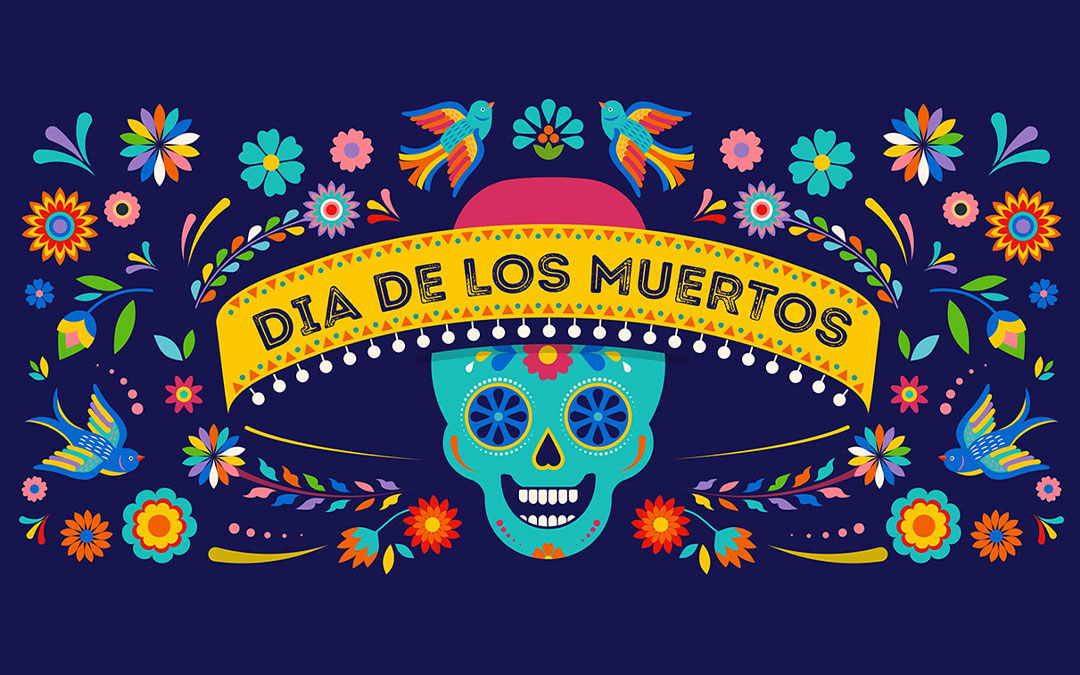As October comes to an end and November begins, the air is filled with a sense of anticipation and excitement, particularly in Mexico and among Mexican communities around the world. It’s the time for Dia de los Muertos, or the Day of the Dead, a unique and vibrant tradition that celebrates life, honors the deceased, and showcases the rich tapestry of Mexican culture.
Origins and Significance
Dia de los Muertos is a centuries-old tradition with indigenous roots, primarily among the Aztec, Nahua, and other Mesoamerican peoples. The holiday originally fell during the ninth month of the Aztec calendar, roughly corresponding to August, and was dedicated to the goddess Mictecacihuatl, the Lady of the Dead. When Spanish conquistadors arrived in the 16th century, they encountered this indigenous tradition and integrated it with their own Catholic All Saints’ Day and All Souls’ Day, which are celebrated on November 1st and 2nd. This fusion gave rise to the modern Dia de los Muertos, which spans from October 31st to November 2nd.
The core belief behind this tradition is that during these days, the spirits of the departed return to the world of the living to be reunited with their families. Dia de los Muertos is not a somber occasion but a celebration of life, a time for families to come together and honor their ancestors, sharing stories, food, and memories.
The Ofrenda: An Altar of Love and Remembrance
One of the most iconic elements of Dia de los Muertos is the “ofrenda,” an altar dedicated to the deceased. Families painstakingly decorate these altars with an array of items, each bearing symbolic significance.
Common ofrenda elements include:
- Calaveras: Sugar skulls, intricately decorated with the names of the departed, to represent the souls of loved ones.
- Candles: To guide the spirits home.
- Marigolds: Known as “cempasuchil” in Mexico, they are believed to help guide the spirits with their vibrant color and scent.
- Pan de Muerto: A sweet bread shaped like a skull or a person, symbolizing the circle of life.
- Photographs and Mementos: To remember and pay tribute to the deceased.
- Favorite Foods and Drinks: Traditional dishes and beverages enjoyed by the departed during their lifetime.
- Incense: To purify the environment and ward off evil spirits
Vibrant Celebrations and Festivities
Throughout Dia de los Muertos, communities come alive with vibrant parades, music, and dancing. Face painting is a popular tradition, with individuals often adorning themselves with intricate calavera designs. In Mexico, the country’s capital, Mexico City, hosts an incredible parade that features colorful costumes, gigantic puppetry, and fantastic displays of artistic creativity.
November 1st – Dia de los Inocentes
Dia de los Muertos begins with Dia de los Inocentes, or the Day of the Innocents. This day is dedicated to the memory of children who have passed away. Families lovingly create altars for young ones, often adorned with toys, candies, and other items that the children would have enjoyed.
November 2nd – Dia de los Muertos
The main day of celebration is when families pay homage to deceased adults. Cemeteries become gathering places for families who lovingly clean and decorate the graves of their loved ones. They share food, stories, and sometimes even music with the departed. It’s a time for reflection and connection, as the living and the dead are united in a moment of shared remembrance.
Embracing the Tradition Worldwide
In recent years, Dia de los Muertos has gained popularity beyond Mexico’s borders. It has become a symbol of unity, diversity, and the celebration of life. Communities around the world, especially those with Mexican diaspora, have embraced this vibrant tradition, adding their own unique cultural elements and interpretations to the celebration.
Dia de los Muertos is a powerful testament to the enduring bonds of family, the strength of culture, and the beauty of remembering and celebrating the lives of those who came before us. As November arrives, let us all take a moment to honor this tradition, whether through art, cuisine, or personal reflection, and remember that the spirits of our loved ones are never truly gone as long as we keep their memory alive in our hearts.






